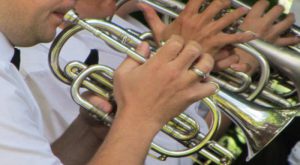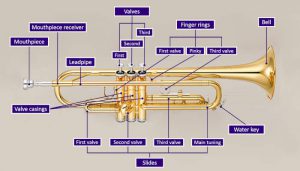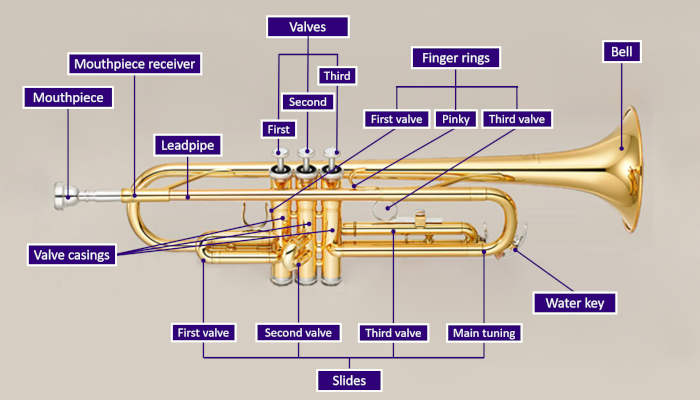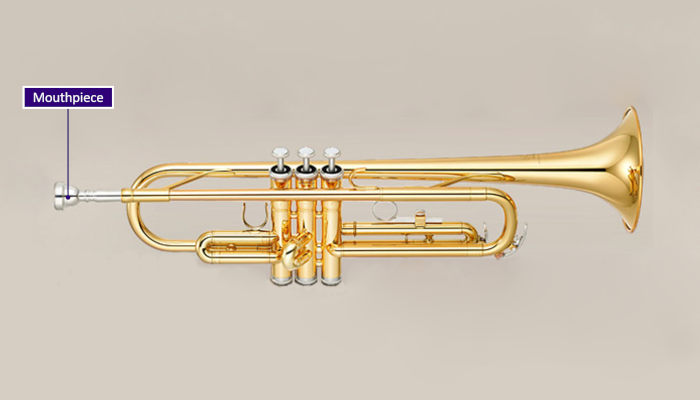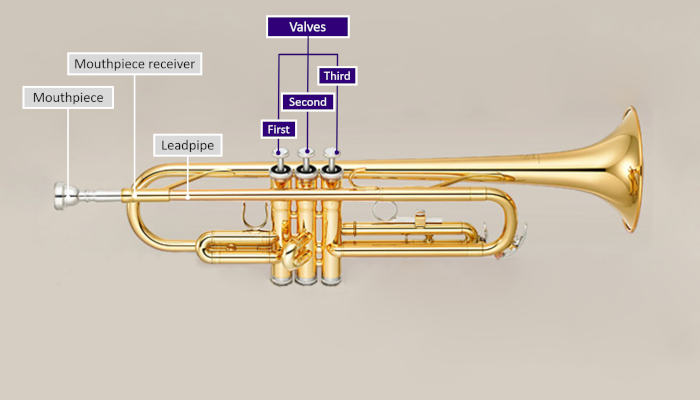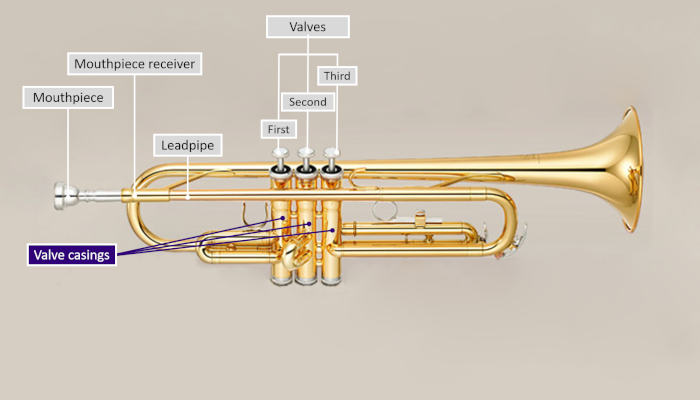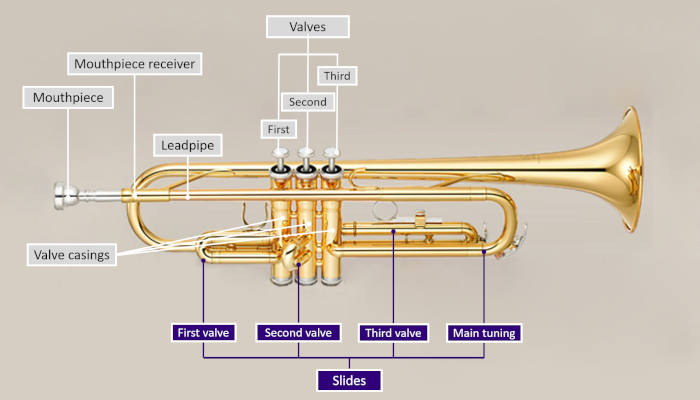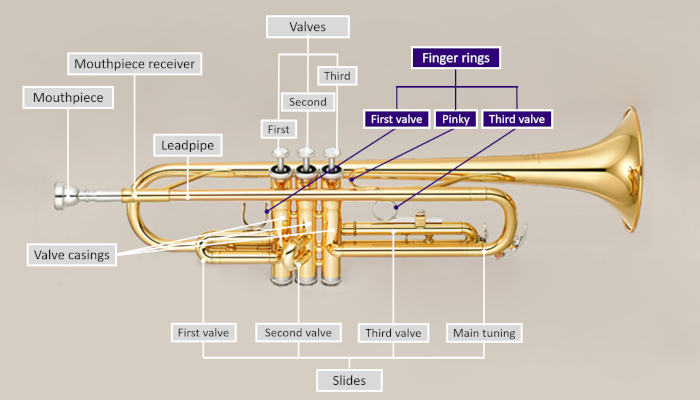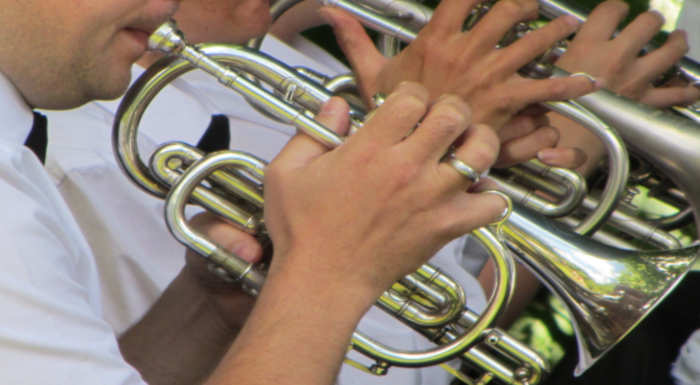
What’s the difference between a trumpet and a cornet?
Cornets look a lot like trumpets from the outside. But despite how easy it is to mistake one for the other, these are two different instruments. The cornet is quite like a trumpet, but in fact, it isn’t part of the trumpet family.
Like many trumpet players, I started out on the cornet in grade school. Then I switched to playing a professional trumpet a couple years later.
This is a common path for many younger student musicians because the cornet is a little more compact and easier to handle than a trumpet. But the two are similar enough that you can freely switch between them without needing to start learning from scratch.
Let’s compare the cornet vs. the trumpet and see some of the differences that make each of these brass instruments unique.
Different origins of the trumpet and cornet
The trumpet and cornet are two very similar instruments that have different roots in history. Early trumpets date back as far as 1500 BC or earlier and were made from animal horns. Their use was mostly limited to ceremonial and communicative purposes.
Improvements in metal making finally made them practical as brass musical instruments around the late Middle Ages. The keyed trumpet appeared in the late 18th century. And the instrument finally took the shape it has today with the addition of modern piston valves during the early 19th century.
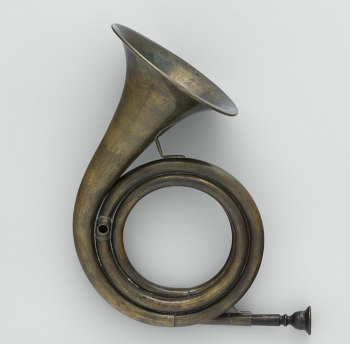
The cornet appeared much later and was adapted from the post horn, a valveless horn, in the 1820s. Valves were added and the pipe was reconfigured to create a level, front-facing bell.
Despite its later appearance, the cornet adopted valves earlier than the trumpet. This limited the trumpet’s range and relegated it to more fanfare-like music passages, while cornet played more melodies.
Designs converge
The cornet and trumpet appeared together in music ensembles until the 20th century, and composers wrote separate parts for each. As instrument makers improved both, the cornet and trumpet gradually started to look and play more alike.
Modern trumpets and cornets made in the same key will have the same pitch, though their sound still differs slightly. And both instruments are almost always made from brass.
Design differences between cornet and trumpet
Though we’ve seen the design of these two instruments largely converge, a few important differences between the cornet and trumpet remain. These differences help explain why the trumpet and cornet sound slightly different.
Size
The first obvious design difference between trumpets and cornets is their size. Trumpets are, except for smaller pocket trumpets, larger than cornets in the same key when measured from mouthpiece to bell. A modern B♭ cornet is about ⅔ the length of a B♭ trumpet.
But if you uncoiled the tubing in each, you’d find they’re the same length. The cornet is just more tightly wrapped, shortening the overall length of the instrument.
Mouthpiece
Another difference you may notice in these two instruments is their mouthpieces. The shank of the mouthpiece that fits into the lead pipe, is shorter and slightly narrower for the cornet than for the trumpet. This is because the cornet’s bore starts out slightly smaller than the trumpet’s.
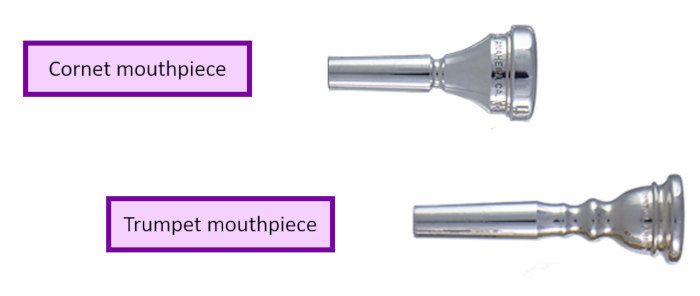
The mouthpiece cup for a cornet is also usually deeper than that for a trumpet. Adapters available for cornet mouthpieces allow you to use them with a trumpet to play with a sound more like a cornet.
Bore shape
The main difference between a trumpet and cornet is also the most subtle one. The bore is the hole in the tubing that the air passes through when you’re playing.
The trumpet has a cylindrical bore. The pipe diameter is the same from the lead pipe all the way to the point where the bell starts to flare. The cornet has a conical bore. The pipe starts smaller in diameter and gradually widens between the lead pipe and the bell flare. This difference gives each instrument a slightly different sound.
Different sounds and styles of play
We’ve seen how similar the trumpet and cornet look. But how do the little differences in design impact how each instrument sounds? And what types of music call for one instrument over another?
Characteristic sound
The cylindrical design of the trumpet’s tubing gives it a bright and lively sound. The differences in tubing also make the trumpet capable of being played louder. A trumpet will usually project better—its sound will be more clearly heard at a distance. This gives the horn a stronger presence within an ensemble.
The cornet has a sweeter and mellower sound than the trumpet due to its conical bore.
Chromatic range
Despite their design differences, the trumpet and cornet basically have the same range at a given key. Most proficient players will be able to play about two and a half octaves.
A player may have trouble playing high pitches on a cornet as well as they could on a trumpet. But this should not be a problem with most concert band or orchestra music.
Genres
The trumpet and cornet can generally be used interchangeably in the same genres of music. And the difference of hand positions between a trumpet and cornet is quite small (related: How to Hold a Trumpet).
But the trumpet is better suited for much jazz and blues because of its bright, clear sound and greater volume. The same is true for marching or military bands.
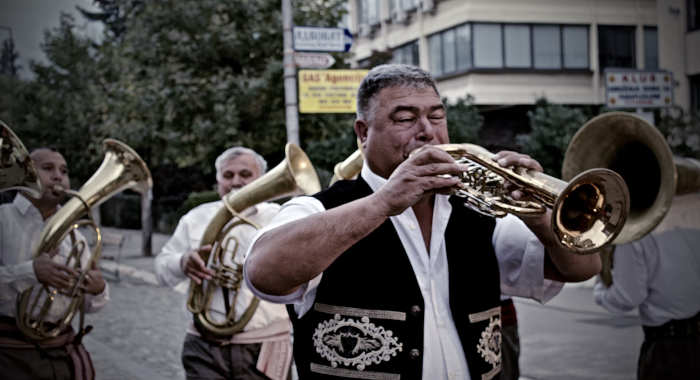
Cornets may be used in orchestras or concert bands, just as one would include a trumpet. A cornet may appear in chamber music and small ensembles where a trumpet may be too overpowering or harsh for a given style of the music. Composers sometimes write specific solo pieces for cornet.
Popularity of cornet vs. trumpet
Though the cornet was more popular in the past, the trumpet now dominates the high brass market.
A trumpet is a better choice for a young person just starting out in a school band. They’ll have an easier time achieving good sound quality and they’ll blend better with the rest of the band.
Some people believe the cornet is more suited to small children who wish to play brass because it’s easier for shorter people to hold than its larger trumpet counterpart. And indeed, players under four feet tall may be unable to reach the valves of a regular trumpet. But in such cases, a more compact pocket trumpet can also be a good choice.
Conclusion
The differences between the cornet and trumpet were more pronounced in earlier times as each was acquiring mainstream acceptance. But the two have largely converged as modern construction techniques and designs improved the sound quality of both.
Each has their place in various brass bands and styles of music. But given the interchangeability of the two and the relative popularity of the trumpet, most musicians tend to choose the trumpet if given the choice.
